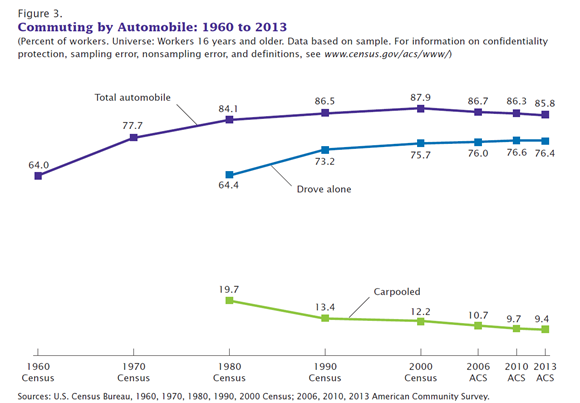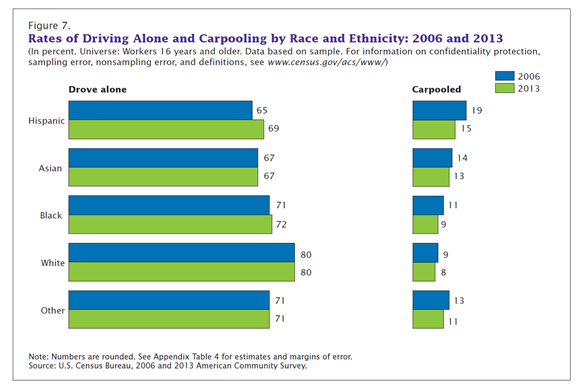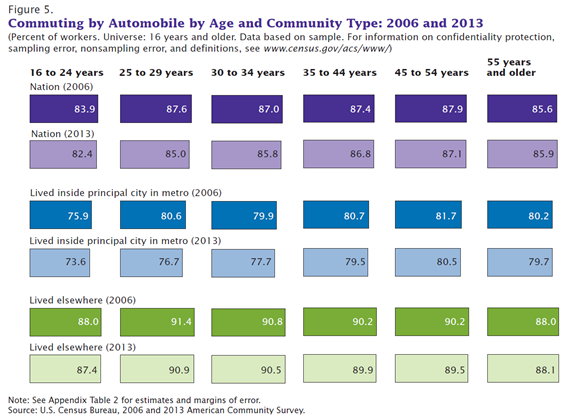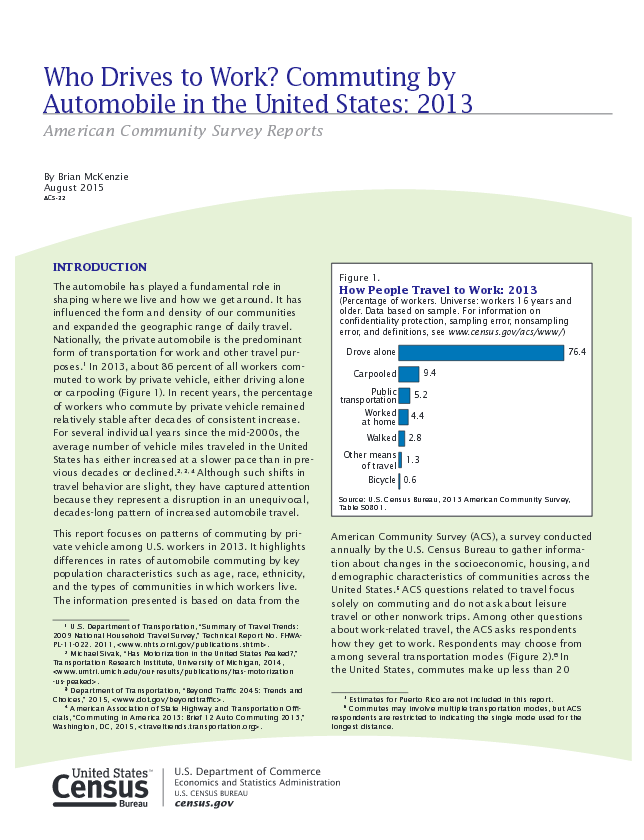Majority of Americans Drive to Work, But Less so for Urban Millennials
Majority of Americans Drive to Work, But Less so for Urban Millennials
If your drive to work feels a little lonely, you may be among the three-quarters of U.S. workers who drive to work alone. Driving alone reached its highest point in 2010, at 76.6 percent of workers, after a decades-long pattern of increase (see below). It remained the most common type of work travel in 2013.
About 86 percent of U.S. workers commuted by automobile in 2013, down from about 88 percent in 2000.The automobile has influenced the form of our communities and how we travel within them. It continues to dominate the work commute as the primary mode of transportation to work, although the rate of driving to work has declined in recent years.
Using data from the 2013 American Community Survey, the Census Bureau’s latest report on commuting, “Who Drives to Work? Commuting by Automobile in the United States: 2013” highlights differences in how people get to work and how that has changed.
Overall, automobile commuting has declined since 2000, in part, due to the continuation of a long-standing pattern of a decline in carpooling. One out of five U.S. workers carpooled in 1980, but in 2013, only one out of 10 carpooled. Hispanic workers showed the highest rate of carpooling in 2013, but also the largest declines in carpooling between 2006 and 2013, from 19 percent to 15 percent.
Some of the most notable recent changes in commuting have occurred among younger workers, particularly those living in cities. In 2013, about 74 percent of workers ages 16 to 24 living in principal cities commuted by automobile, compared with about 80 percent of the oldest workers. Workers between the ages of 25 and 29 living in principal cities showed the largest auto commuting declines since 2006, at about 4 percentage points. This is also the group that was least likely to have a vehicle at home in 2013.
For more information on commuting products, including special reports on topics such as working at home, daytime population change, and bicycling to work, visit the Census Bureau’s commuting page.







